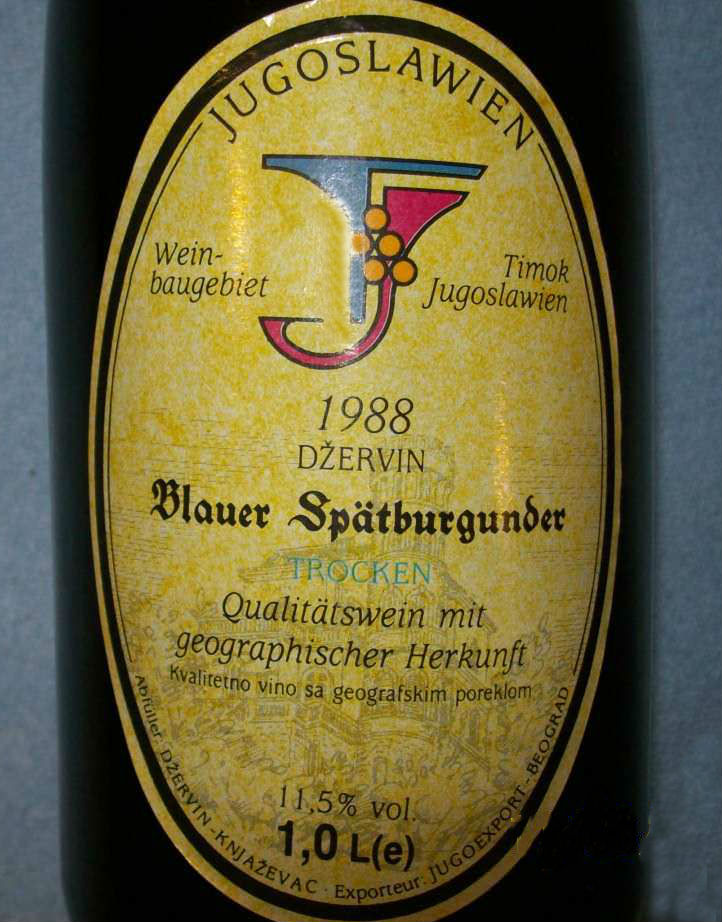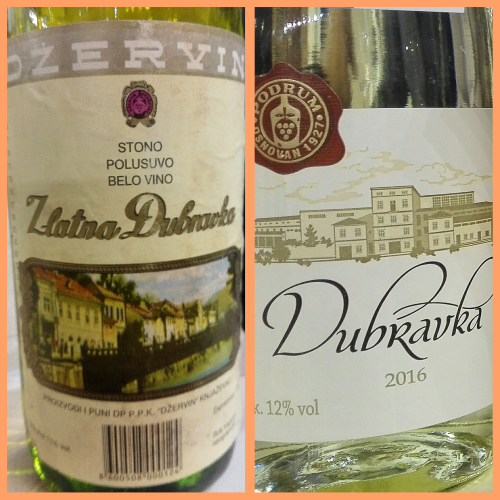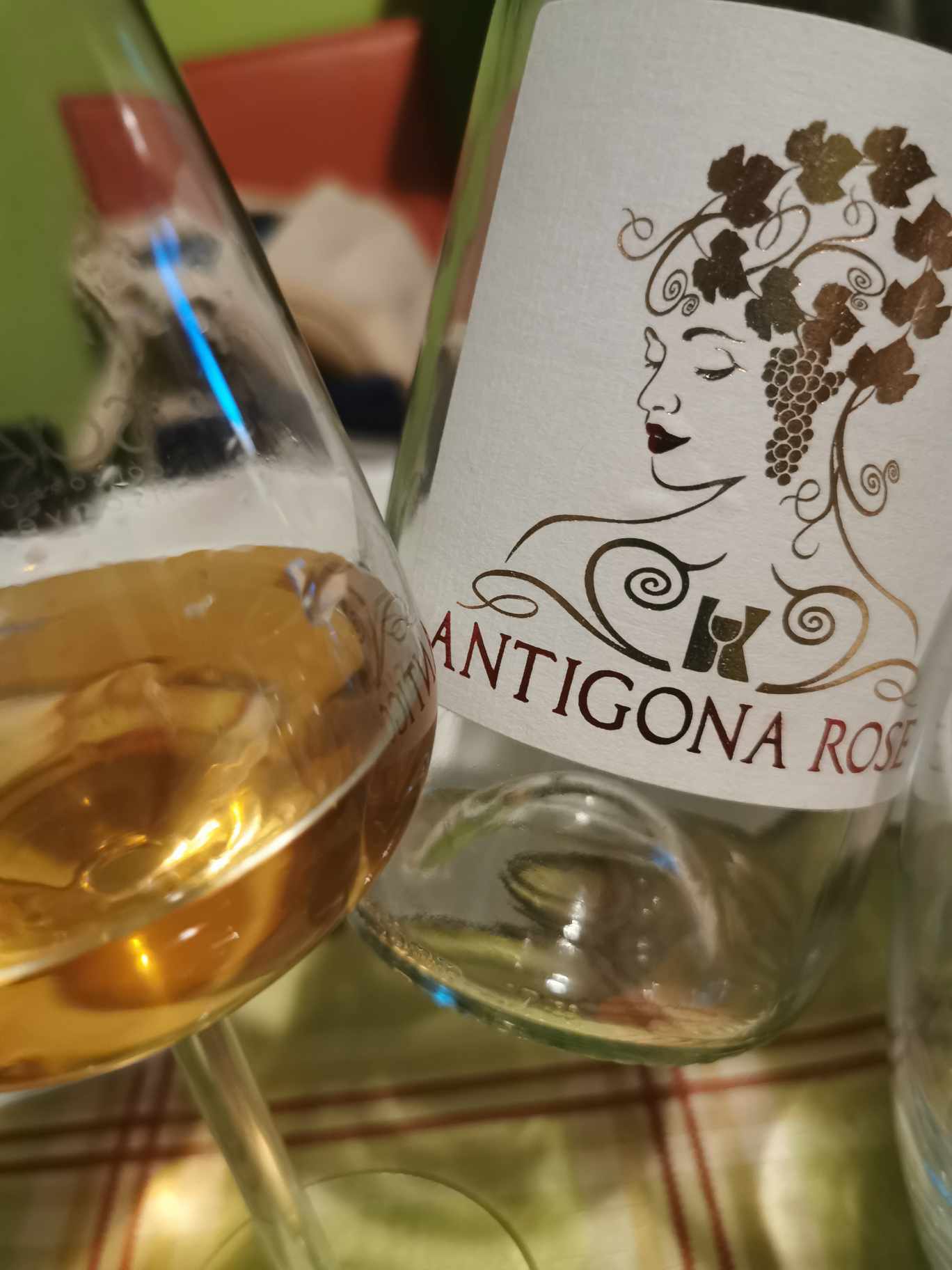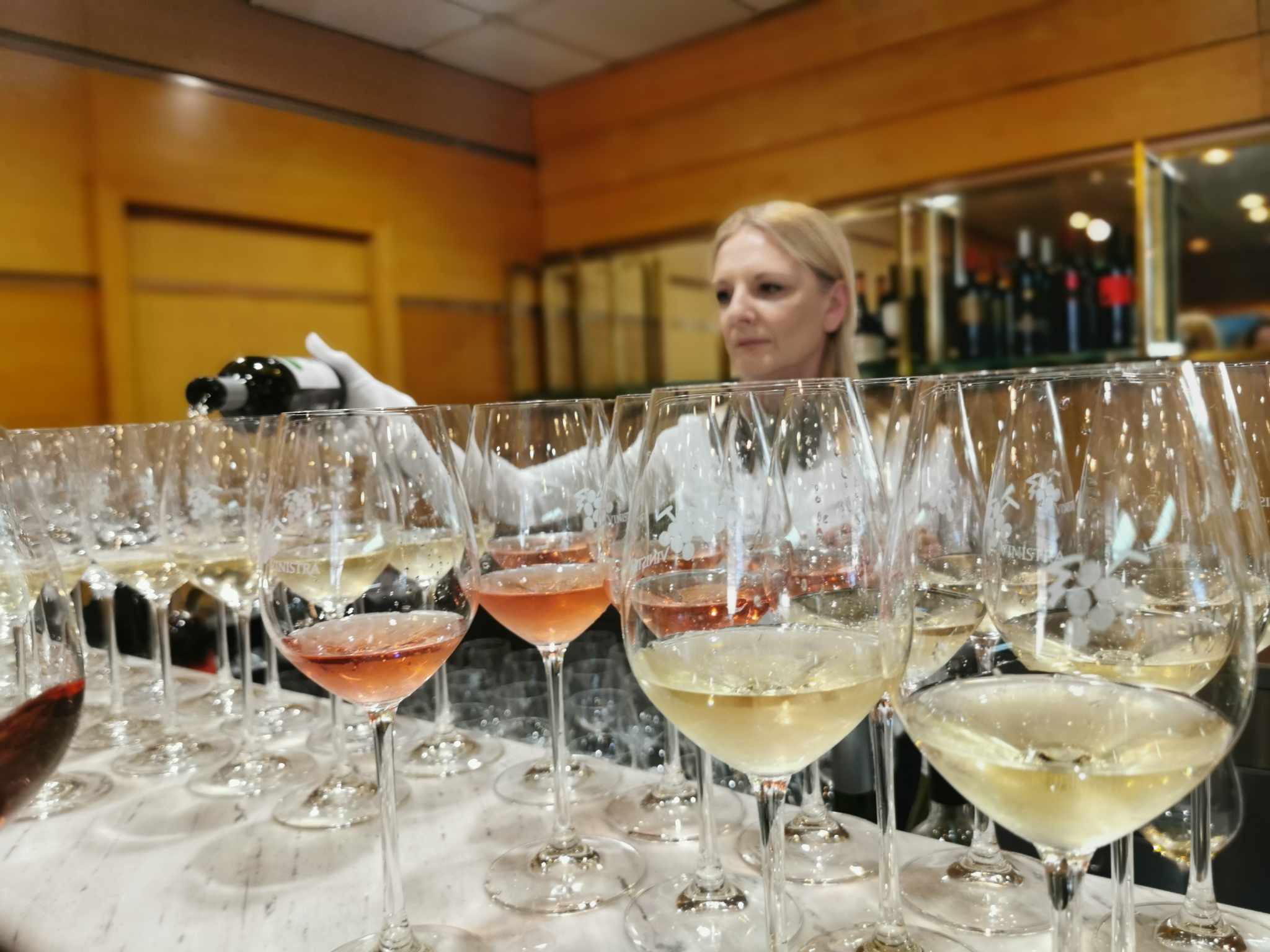News
News / 02/26/2018 / 2334
At this year's BeoWine Fair held on 22nd February, 2018 in Belgrade, the premiere of wines from Džervin Winery (Knjaževac, East Serbia) could be considered the fair's highlight. Their wines stirred attention of both the consumers and experts who awarded these wines with bronze medal at the wine fair competition. Thus, they were listed as the awarded laureates of the wine fair with the lowest price tag.
And how did it all begin?
In 1922, Bogdan Arandjelović owned 4.5 hectares of vineyards. He sent his oldest grandson Radul Bogdanović to study at the winemaking school in Bukovo near Negotin. After graduation, Radul suggested setting up a cooperative in order to increase production capacity. Soon afterwards, Bogdan and five other wealthy citizens of Knjaževac invested a portion of necessary funds, whilst several hundred small shareholders from Knjaževac and surrounding villages invested the remaining share capital, so the fruit and vinegrowing cooperative was founded on March 27th, 1927. Already in 1929, the cooperative had the first harvest under the supervision of a retired German oenologist from Vršac and Radul Bogdanović. This triggerred rapid development of winemaking in Knjaževac region. This was the beginning of Džervin, as remembered by Radul's descendants...
After the Second World War, the wine cellar got expanded and the private wine cooperative Džervin became state-owned. Radul Bogdanović left Knjaževac and worked as an oenologist in Tunisia, Navip, Strumica and Veles.
In 1960, the vinegrowing and fruit-growing cooperative merged with the state-owned agricultural estate Timok to form Džervin Cooperative Cellar. The name Džervin indicates business activities of the cooperative ( DŽE= jams ("džemovi"), R = brandy ("rakija") , VIN = wine (vino)).
During 1990s, Džervin went through a period of hardships. Decline in production was followed by unsuccessful attempts to restore former production volumes. Failed privatizations in the first decade of the 21st century have led to further collapse of Džervin's potential. Finally, in 2013, current owners take over the ruined company and initiate gradual revitalization of fruit and grape production.
Better future for Džervin wines
The goal of new owners was primarily to renew Džervin's vineyards. In cooperation with professors from the Faculty of Agriculture in Belgrade, a revitalization project has been carried out so the vineyards that have been abandoned over the past 10 years are now producing quality grapes again. Thus, at the plot called Štipina, a vineyard covering 20 hectares has been renewed ( varieties: Pinot Noir, Italian Riesling and Rheinriesling). Also, new vineyard covering 20 hectares was planted on the plot called Boševo (varieties: Rheinriesling, Sauvignon Blanc, Muscat Hamburg, Cabernet Sauvignon, Merlot and Blaufrankisch).
In its glorious days, Džervin was well-known for its wine label Schlossberg (Pinot Noir wine, once exported to Germany in large quantities), Golden Dubravka, Riesling, Semillon, Timočko Black. Also, large quantities of brennwein (wine used to make spirits) were exported to German market.


At BeoWine Fair, Džervin presented three labels of their wines aimed at entering the market battle with Macedonian wineries in the entry-level wine segment (up to 2.5 EUR/bottle). Judging by reaction of visitors at the Belgrade Fair, their product will not remain unnoticed on the market. Considering wine sales segmentation by price category, Džervin seems determined to position itself on the market in a niche that hasn't been taken seriously by modern Serbian wineries. If we talk about selling wine in Serbia according to price criterion, 26% of consumers buy wines that cost 1.7 EUR-3.00 EUR, and 32% of consumers allocate between 3.00 EUR and 4.2 EUR for a bottle of wine. That's why it's no surprise that 23 million liters of wine are imported from Macedonia and sold in Serbia.
Interestingly, Džervin decided not to satisfy consumers' general preference for some residual sugar, but rather to educate consumers. All wines are bone-dry, including rosé wine (although in this price segment, we mostly find off-dry and semi-sweet rosés on the Serbian market).

Dubravka 2016 - (varietal composition: Italian Riesling, Rheinriesling) Wine that will satisfy both consumers who are merely looking for spritzer-friendly wine and those who prefer drinking a glass of chilled white wine every day. On the nose, distinctive citrus notes of Italian Riesling bring freshness. Only in the finish, traces of yellow apples and pear come to the fore. Refreshing acidity, medium body.
Rosé Romansa 2016 - (varietal composition: Muscat Hamburg, Pinot Noir) Salmon pink color that currently dominates the Serbian market in the premium rosé segment. Attractive muscat aromas on the nose. On the palate, light, refreshing, easy-to-understand wine. Fruity flavours of cherry, strawberries. Quite enough for a wine in the price range of 2.5 EUR.
Despot red 2016 - (varietal composition: Merlot, Blaufrankisch) Pleasant, balanced wine. Not too complex. With its distinct fruity character dominated by raspberries, red forest fruits and spicy notes of Blaufrankisch, it will satisfy also more educated Serbian consumers, not only those who classify wines exclusively on the basis of colour (white and black wine) or taste (drinkable and sour). Soft tannins complement the pleasant impression. In any case, great price/quality ratio.


Tomislav Ivanović
Awarded wine writer, wine critic and contributor to selected wine magazines. WSET3-certified author and editor-in-chief of www.vinopedia.rs. Member of Vojvodina Sommelier Association. Juror in national and international wine competitions. Lecturing about wines of Serbia and the Balkans. Local partner of Wine Mosaic organization. Co-founder of International Prokupac Day.

Pročitajte i druge članke iz ove rubrike:


VINOPEDIA TOP 10 2024
PROČITAJ VIŠE


GIUAANI - VINSKI TURIZAM NA GRUZIJSKI NAČIN
PROČITAJ VIŠE


SPASIMO STARE VINOGRADE SRBIJE
PROČITAJ VIŠE


NAŠLI SMO ANTIGONU IZ ORAHOVCA
PROČITAJ VIŠE


SRPSKO VINO KOŠTA 100 EUR - I ŠTA ĆEMO SAD?
PROČITAJ VIŠE
Winner MILLESIMA BLOG AWARD 2016

Pobednik MILLESIMA BLOG AWARD 2016
VINO & FINO wine personality of the year 2016

VINO & FINO vinska ličnost godine 2016